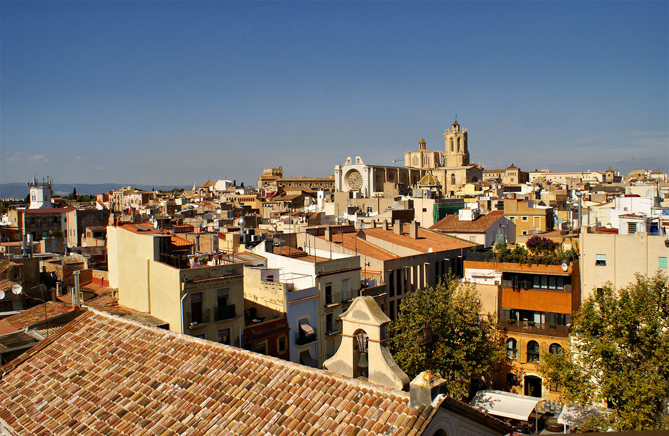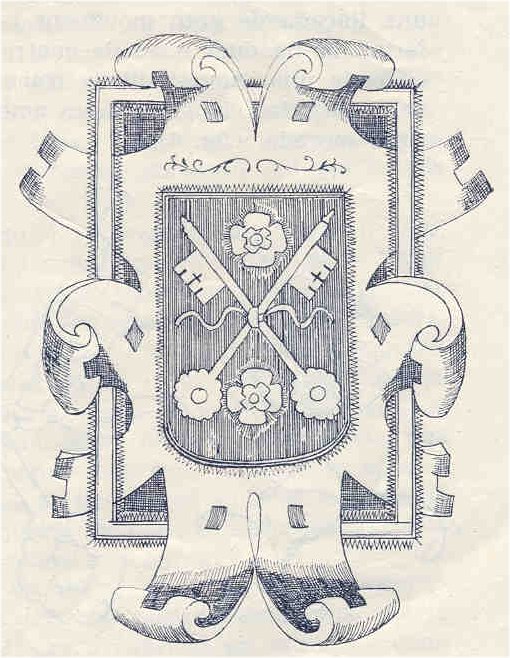|
Conca De Barberà (DO)
Conca de Barberà is a Spanish Denominación de Origen Protegida (DOP) (''Denominació d'Origen Protegida'' in Catalan) for wines located in central Catalonia in the northern portion of the Tarragona Province. Situated within the river valleys of the Francolí and Anguera, it has historically been known for its white wines, but has been gaining more attention for its reds, especially those from the native Trepat grape. Today, the Conca de Barberà DOP mainly produces red wines, along with whites, and minor amounts of rosés and sparkling wines. History It is highly probable that wine production was introduced by the ancient Romans but by the time of the Moorish dominion of the Iberian peninsula it had all but disappeared from the Conca de Barberà area. As in many other wine producing regions, wine production took off again thanks to the influence of the monasteries founded in the Middle Ages, in this case the Monastery of Santa Maria de Poblet, near Montblanc which was th ... [...More Info...] [...Related Items...] OR: [Wikipedia] [Google] [Baidu] |
Province Of Tarragona
Tarragona (, ) is a province of eastern Spain, in the southern part of the autonomous community of Catalonia. It is bordered by the provinces of Castellón, Teruel, Zaragoza, Lérida and Barcelona and by the Mediterranean Sea. The province's population is 795,902 (2018), about one fifth of whom live in the capital, Tarragona. Some of the larger cities and towns in Tarragona province include Reus, Salou, El Vendrell, Tortosa, Valls, Amposta. This province has 183 municipalities. The province includes several World Heritage Sites and is a popular tourist destination. There are Roman Catholic cathedrals in Tarragona and Tortosa. History After the Umayyad conquest of Hispania in the late eighth century, this part of Spain came under the control of the Umayyad Caliphate and most of the Iberian peninsula was known as Al-Andalus, and was dominated by Muslim rulers. Abd al-Rahman I founded an independent dynasty that survived in the region until the 11th century. After the Muslim co ... [...More Info...] [...Related Items...] OR: [Wikipedia] [Google] [Baidu] |
Reus
Reus () is the capital of Baix Camp, in the province of Tarragona, in Catalonia, Spain. The area has always been an important producer of wines and spirits, and gained continental importance at the time of the Phylloxera plague. Nowadays it is known for its commercial activity, for being a centre for rock-climbing and as the birthplace of architect Antoni Gaudí. Name The origin of the name is a source of discussion. One of the theories is that Reus comes from the Latin word used to describe convict prisoners (''reus''), and as such, it would be a Roman penitentiary. Currently, the most accepted theory is that the name has Celtic roots, from the root ''red'' that originated the name ''redis'' (or ''reddis''), that would approximately mean ''place in the way'' / ''place in the roads'', or said alternatively, an inhabited place in a cross-road. History Foundation and early history Around 1150 Robert d'Aguiló repopulated the region of Reus, after receiving it on 3 June 1154. ... [...More Info...] [...Related Items...] OR: [Wikipedia] [Google] [Baidu] |
Sarral, Tarragona
Sarral is a municipality and small town in the comarca of Conca de Barberà in the province of Tarragona in Catalonia, Spain. It includes the settlements of Sarral and Montbrió de la Marca. Montbrió was originally a separate municipality, but was incorporated into Sarral in 1972. The municipality has an area of 52 km, and a population (in 1995) of 1418. Its elevation is approximately 467m. Economic activity is mainly agricultural, principally vines and wine. Sarral produces its own variety of rosé cava (a sparkling wine). The other major traditional activity is quarrying alabaster and producing alabaster sculptures and craftware. Sarral also hosts Spain's biggest producer of frozen bread and pizzas. The town is ancient, with prehistoric urban remains having been found. It was granted a town charter in 1180. In the 14th century there was a large Jew Jews ( he, יְהוּדִים, , ) or Jewish people are an ethnoreligious group and nation originating from th ... [...More Info...] [...Related Items...] OR: [Wikipedia] [Google] [Baidu] |
Rocafort De Queralt
Rocafort de Queralt is a municipality and village in the comarca of Conca de Barberà in the province of Tarragona in Catalonia, Spain. The municipality has an area of 8.6 km. Its elevation is approximately 562m. Economic activity is mainly agricultural, principally cereals, vines and wine, principally cava, a sparkling wine. In former times, Rocafort was an important centre for the production of saffron Saffron () is a spice derived from the flower of ''Crocus sativus'', commonly known as the "saffron crocus". The vivid crimson stigma and styles, called threads, are collected and dried for use mainly as a seasoning and colouring agent i .... The town's origins are obscure, but its castle is mentioned in an 1178 document. As of January 2012, the mayor of Sarral is Valentí Gual i Vilà. References External links Official websiteGovernment data pages Municipalities in Conca de Barberà {{Tarragona-geo-stub ... [...More Info...] [...Related Items...] OR: [Wikipedia] [Google] [Baidu] |
Pira, Tarragona
Pira, Tarragona is a village in the province of Tarragona and autonomous community of Catalonia, Spain , image_flag = Bandera de España.svg , image_coat = Escudo de España (mazonado).svg , national_motto = ''Plus ultra'' (Latin)(English: "Further Beyond") , national_anthem = (English: "Royal March") , i .... References External links * Government data pagesArticle in the ''Enciclopedia Catalana'' (in Catalan) Municipalities in Conca de Barberà {{Tarragona-geo-stub ... [...More Info...] [...Related Items...] OR: [Wikipedia] [Google] [Baidu] |
Forès
Forès is a municipality and village in the comarca of Conca de Barberà in the Province of Tarragona in Catalonia Catalonia (; ca, Catalunya ; Aranese Occitan: ''Catalonha'' ; es, Cataluña ) is an autonomous community of Spain, designated as a '' nationality'' by its Statute of Autonomy. Most of the territory (except the Val d'Aran) lies on the nort ..., Spain. References External links Official websiteGovernment data pages Municipalities in Conca de Barberà {{Tarragona-geo-stub ... [...More Info...] [...Related Items...] OR: [Wikipedia] [Google] [Baidu] |
L'Espluga De Francolí
L'Espluga de Francolí is a village in the province of Tarragona and autonomous community of Catalonia Catalonia (; ca, Catalunya ; Aranese Occitan: ''Catalonha'' ; es, Cataluña ) is an autonomous community of Spain, designated as a ''nationality'' by its Statute of Autonomy. Most of the territory (except the Val d'Aran) lies on the north ..., Spain. References External links * Government data pages Municipalities in Conca de Barberà {{Tarragona-geo-stub ... [...More Info...] [...Related Items...] OR: [Wikipedia] [Google] [Baidu] |
Conesa, Tarragona
Conesa is a municipality and village in the comarca of Conca de Barberà in the province of Tarragona in Catalonia Catalonia (; ca, Catalunya ; Aranese Occitan: ''Catalonha'' ; es, Cataluña ) is an autonomous community of Spain, designated as a ''nationality'' by its Statute of Autonomy. Most of the territory (except the Val d'Aran) lies on the north ..., Spain. References External links Official websiteGovernment data pages Municipalities in Conca de Barberà {{Tarragona-geo-stub ... [...More Info...] [...Related Items...] OR: [Wikipedia] [Google] [Baidu] |
Blancafort, Tarragona
Blancafort is a municipality in the province of Tarragona and the autonomous community of Catalonia, Spain. History Blancafort was first mentioned in 1207 census documents in which a castle in the name of Pere Romeu y de Fitor Arnau was noted. Blancafort was part of the Dukedom of Montblanc. It was fortified in the fourteenth century. During the War of Succession it declared itself in favor of the Archduke Charles so it was attacked by Philip V's troops. After the war, it was integrated into the township of Tarragona. During the War of Independence it was looted by troops commanded by the French General, Louis Gabriel Suchet. Culture The parish church is dedicated to Saint Magdalene and was built on the remains of the ancient Roman temple. It is of ample proportions and of a late Baroque style. It consists of a single nave The nave () is the central part of a church, stretching from the (normally western) main entrance or rear wall, to the transepts, or in a church wi ... [...More Info...] [...Related Items...] OR: [Wikipedia] [Google] [Baidu] |
Barberà De La Conca
Barberà de la Conca is a village in the province of Tarragona and autonomous community of Catalonia, Spain. History The region in which Barberà de la Conca is located is named after this village. Some archaeological remains which have been found show that it was inhabited during the time of the Roman occupation. It was first mentioned in 945 with the name of Campo Barberano in a document outlining the donation of the San Pedro church to the Santa Cecilia de Montserrat monastery. In 1012 it appeared in the aforementioned's castrum of Barbará. At the beginning of the eleventh century the place was uninhabited, it was recovered thanks to Ramón Berenguer I donating it to Arnau Pere de Ponts, called the Puig of Barbará. He was charged with repopulating the area and raising a castle there. The complete repopulation occurred in the twelfth century when the castle was ceded to the Knights of the Order of the Temple. In 1307 the Templars were imprisoned by order of veguer of Montbla ... [...More Info...] [...Related Items...] OR: [Wikipedia] [Google] [Baidu] |
New World
The term ''New World'' is often used to mean the majority of Earth's Western Hemisphere, specifically the Americas."America." ''The Oxford Companion to the English Language'' (). McArthur, Tom, ed., 1992. New York: Oxford University Press, p. 33: "[16c: from the feminine of ''Americus'', the Latinized first name of the explorer Amerigo Vespucci (1454–1512). The name ''America'' first appeared on a map in 1507 by the German cartographer Martin Waldseemüller, referring to the area now called Brazil]. Since the 16c, a name of the western hemisphere, often in the plural ''Americas'' and more or less synonymous with ''the New World''. Since the 18c, a name of the United States of America. The second sense is now primary in English: ... However, the term is open to uncertainties: ..." The term gained prominence in the early 16th century, during Europe's Age of Discovery, shortly after the Italian explorer Amerigo Vespucci concluded that America (now often called ''the Am ... [...More Info...] [...Related Items...] OR: [Wikipedia] [Google] [Baidu] |

